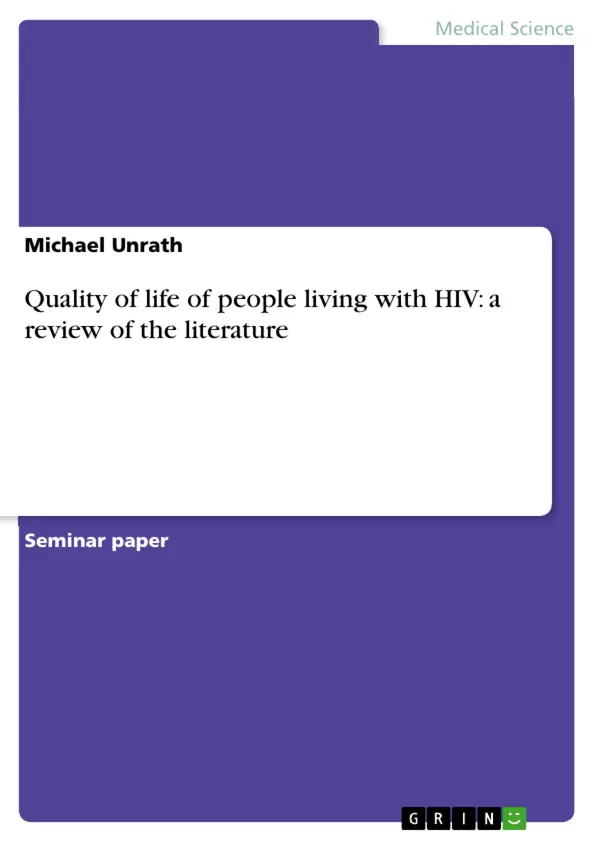Since the advent of highly active antiretroviral therapy (HAART) in the mid 90s, the face of the HIV epidemic has changed considerably. Obvious progress has been made with respect to morbidity and mortality. But in spite of the effective medical treatment, quality of life (QOL) is still challenged by one of the most stigmatised diseases in the world. The aim of this review was therefore to sum up the up-to-date knowledge concerning QOL and to identify factors promoting QOL in HIV+ individuals. Another aim was to detect obvious gaps in knowledge that should be filled by further research activity.
Inhaltsverzeichnis (Table of Contents)
- Abstract
- Introduction
- Methods
- Side effects of HAART and physical impairments
- Nutrition and other lifestyle factors
- Psychosocial factors and mental health
- Conclusions
- Literature
Zielsetzung und Themenschwerpunkte (Objectives and Key Themes)
This review aims to synthesize current knowledge regarding the quality of life (QOL) of individuals living with HIV and identify factors that promote QOL. Another objective is to pinpoint gaps in knowledge that necessitate further research.
- Quality of life (QOL) of people living with HIV
- Impact of highly active antiretroviral therapy (HAART) on QOL
- Side effects of HAART and their influence on physical and psychological well-being
- Psychosocial factors contributing to QOL
- Nutritional and lifestyle factors impacting QOL
Zusammenfassung der Kapitel (Chapter Summaries)
The introduction of highly active antiretroviral therapy (HAART) in the mid-1990s has significantly altered the HIV epidemic, leading to substantial reductions in mortality and morbidity. Despite this progress, QOL remains a concern, influenced by both medical treatment and psychosocial factors. This review examines the current literature on QOL in HIV-infected individuals, focusing on the impact of HAART side effects, nutritional and lifestyle factors, and psychosocial aspects.
The chapter on side effects of HAART discusses the prevalence and impact of various adverse effects, including diarrhea, anemia, lipodystrophy, and peripheral neuropathy. These impairments can significantly affect physical capacity, role functioning, and overall well-being, thereby impacting QOL. The chapter highlights the heterogeneity of body shape changes, emphasizing the significant role of NRTIs in the development of lipoatrophy and the general effect of HAART on lipodystrophy.
Schlüsselwörter (Keywords)
Quality of life, HIV, AIDS, HAART, side effects, lipodystrophy, lipoatrophy, psychosocial factors, mental health, nutrition, lifestyle factors, stigma, well-being, antiretroviral treatment, QOL, HIV-infected individuals.
- Citation du texte
- Michael Unrath (Auteur), 2009, Quality of life of people living with HIV: a review of the literature, Munich, GRIN Verlag, https://www.grin.com/document/155029



